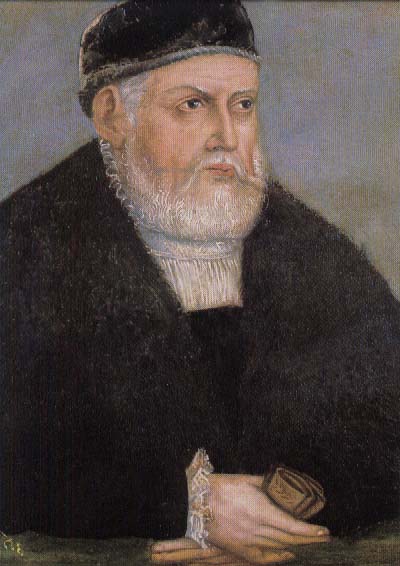Zygmunt I Stary (Sigismund I the Elder) King of Poland and Grand Duke of Lithuania 1506-1548

Born: 1 January 1467, Kozienice, Poland
Died: 1 April 1548, Cracow, Poland
Summary. The period of his rule is described as “Golden Age of Polish culture.”
Early days. Father, Kazimierz IV Jagiellonczyk (Casimir IV Jagiellon ), King of Poland 1447-1492, mother Elisabeth Habsburg of Austria (aka Elzbieta Rakuszanka). Zygmunt followed his brothers Jan I Olbracht (John I Albert) King of Poland 1492-1501 and Aleksander I Jagiellonczyk (Alexander I Jagiellon) King of Poland 1501-1506, to the Polish throne. Their elder brother Wladyslaw II Jagiellonczyk became king of Hungary and Bohemia.
Zygmunt’s rule. Before he became a king he ruled in the name of his brother , Wladyslaw II Jagiellonczyk, the Duchy of Glogow (1499), the Duchy of Opawa (1501) and Silesia and Lower Luzyce (1504). Zygmunt I faced the challenge of consolidating internal power in order to face external threats to the country. During Alexander's reign, the law Nihil novi had been instituted, which forbade Kings of Poland from enacting laws without the consent of the Sejm. This proved crippling to Zygmunt’s dealings with the szlachta (gentry) and magnates. Despite this Achilles heel, he had several successes. He established (1527) a conscription army and the bureaucracy needed to finance it. He established Armenian charter (1519), principles of lawsuits (1523) and cared for royal towns. Intermittently at war with Vasily III of Muscovy, starting in 1507 (before his army was fully under his command), 1514 marked the fall of Smolensk (under Polish domination) to the Muscovite forces (which lent force to his arguments for the necessity of a standing army). In 1515 he entered an alliance with the Holy Roman Emperor Maximilian I. In return for Maximilian lending weight to the provisions of the Second Peace of Torun, Zygmunt I consented to the marriage of the children of his brother, Wladyslaw II of Bohemia and Hungary, to the grandchildren of Maximilian. Through this double marriage contract, Bohemia and Hungary passed to the House of Habsburg in 1526, on the death of Zygmunt's nephew, Louis II. As from 1515 he encouraged Jewish immigration, especially from Austria. The Polish wars against the Teutonic Knights ended in 1525, when Albrecht von Hohenzollern, their Grand Master (and Zygmunt’s nephew), converted to Lutheranism, secularized the order, and paid in Cracow homage to Zygmunt I. In return, he was given the domains of the Order, as the First Duke of Ducal Prussia. This was called the Prussian Homage. Also in 1525 erupted an insurrection in Gdansk directed against Maciej Drzewicki, bishop of Cuiavia. In April 1526 Zygmunt I at the front of 8,000 soldiers entered the city and ordered beheading of the leaders of the insurrection. In other matters of policy, Zygmunt I sought peaceful coexistence with the Khanate of Crimea, but was unable to completely end border skirmishes. In order to ensure the throne for his son Zygmunt August he crowned him in 1529. Poland had then two kings Zygmunts and that’s why Zygmunt I got the nickname the “Elder.”. The third campaign against Muscovy, 1534-1537, ended indecisively with a truce. Year 1537 brought “Rokosz” of Lwow (“Wojna kokosza”): the gentry was unhappy with the hegemony of the elite. It ended with a compromise. Zygmunt I was a humanist. Long before his marriage to Bona Sforza he brought numerous Italians to Cracow and developed an expert taste for architecture and music. He and Bona Sforza, were both patrons of Renaissance culture, which under them began to flourish in Poland and in the Grand Duchy of Lithuania. He initiated rebuilding in the Renaissance style the royal palace at Wawel. He founded the “Zygmunt’s Chappel” (Kaplica Zygmuntowska) with a “Zygmunt bell” for the Wawel cathedral.
Zygmunt’s I family life. Between 1496 and 1510 he had a concubine, Katarzyna Telniczanka, with whom he had three children: Jan (bishop of Wilno and Poznan), Regina (wife of Hieronim Szafraniec) and Katarzyna (wife George III, count of Monfort). In 1515 he married Barbara Zapolya with whom he had two children: Jadwiga nad Anna. Finally in 1518 he married Bona Sforza, daughter of Gian Galeazzo Sforza of Milan, with whom he had six children: Izabella, Queen Consort of Hungary, wife of Jan Zapolya, King of Hungary; Jadwiga, wife of Joachim II Elector of Brandenburg; Zygmunt II August, King of Poland 1548-1572; Zofia, wife of Heinrich Duke of Brunswick; Anna Jagiellonka, wife of Istvan Bathory Prince of Transylvania (later Stefan Batory King of Poland 1575-1586); Katarzyna, Queen Consort of Sweden, wife of Johan III Vasa (Gustavsson), King of Sweden 1569-1592.
Based on a biography in Wikipedia
Wikipedia
All text is available under the terms of the GNU Free Documentation License.
See also:
Norman Davies "Playground of Gods, History of Poland" Chapter 5, Columbia University Press, 1982
Other sources
Towarzystwo Milosnikow Glogowa (Telniczanka)
GEN-MEDIEVAL-L Archive (Telniczanka)
Portrait
Return to home page:
Prominent Poles
